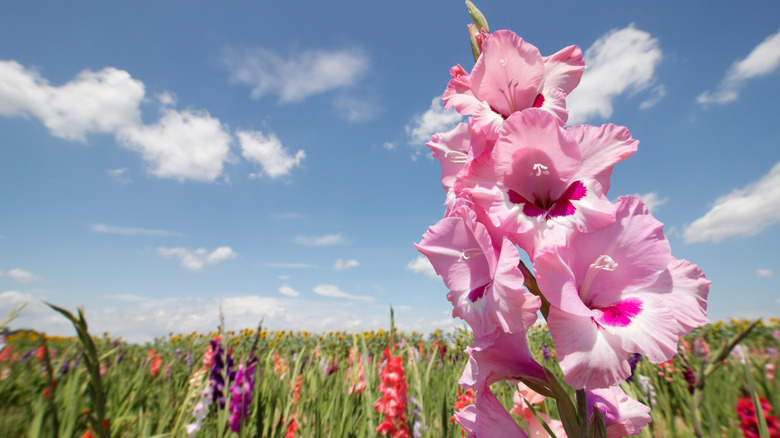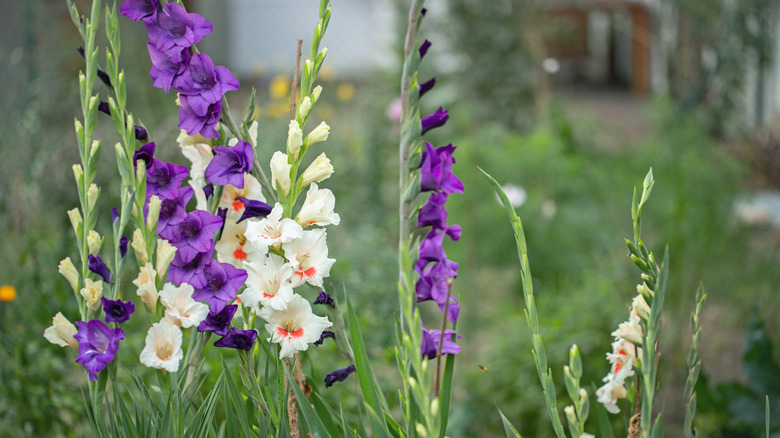Mistakes That Are Killing Your Gladiolus In The Garden
Gladiolus are gorgeous summer flowers that will turn any garden into a kaleidoscope of color. But these tall, graceful plants can be unexpectedly finicky, and even veteran gardeners sometimes have trouble keeping them thriving. Some of the biggest errors gardeners make when growing gladiolus include overcrowding the plants, not picking a sunny enough spot, practicing poor water management, and failing to protect the plants from pests and disease.
Overcrowding is perhaps the most common problem gladiolus face. Gladiolus grow from corms, which are similar to bulbs. And before planting your gladiolus corms, you need to make sure you have enough space for them to be planted about 6 to 10 inches away from each other. If they're planted too close together, they will struggle to get enough nutrients and airflow. This can lead to weak growth and an increased susceptibility to diseases like root rot to fungal infections. Health and pest problems are also more difficult to notice and deal with in an overcrowded garden.
Another thing to keep in mind when planting your corms is that it's essential to pick a sufficiently sunny spot, as a lack of light can prove fatal. Gladiolus are lovers of the sun and need at least six to eight hours of direct light per day to thrive. Planting them in a shady corner of your garden can lead to weak, spindly stalks and few flowers.
Watering issues and pest problems can be gladiolus killers
Another preventable way gladiolus can meet their doom is through improper water management. Although they like consistent moisture, overwatering is a common mistake that results in waterlogged soil and rotting corms. On the other hand, allowing gladiolus to dry out completely for extended periods stresses the plants and leads to stunted growth or early wilting. It's all about finding the right balance. Unfortunately, many gardeners inadvertently tip the scales in the wrong direction.
Pests and diseases can be hidden dangers that are ruining your garden. Thrips, tiny insects that feed on the leaves and flowers, can quickly overrun a poorly maintained garden, causing deformities, discoloration, and stunted plant growth. Inspecting your corms for decay or storage rot before planting prevents diseased corms from introducing infections at the start of the growing season. Watch for signs of pests or disease throughout the growing season, and promptly remove or treat any sick or infested plants.

